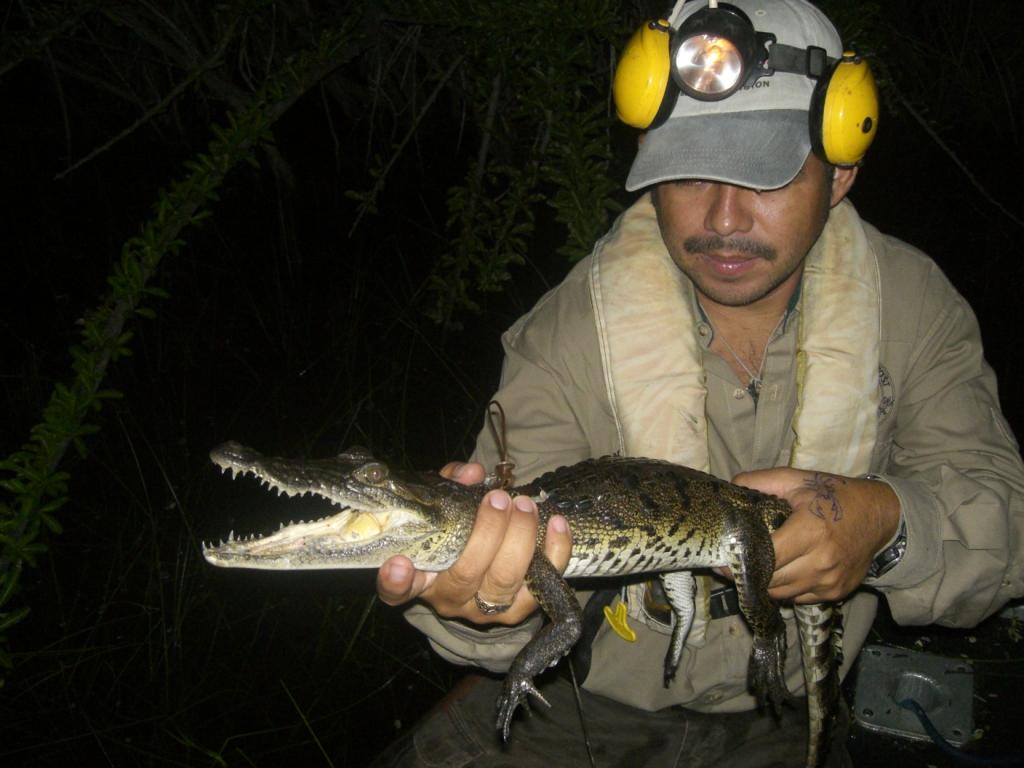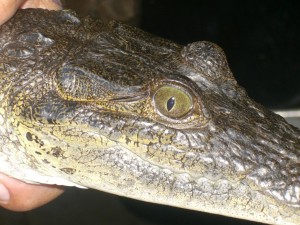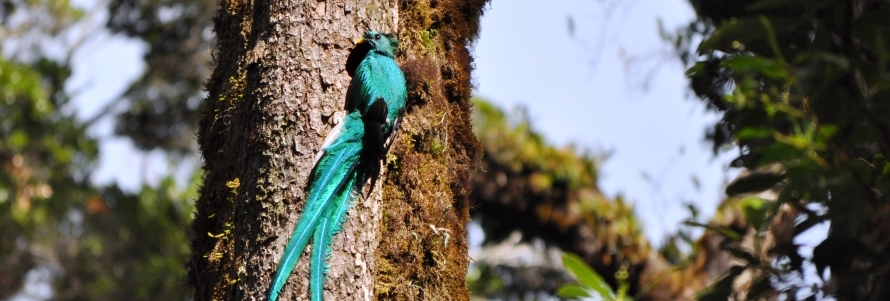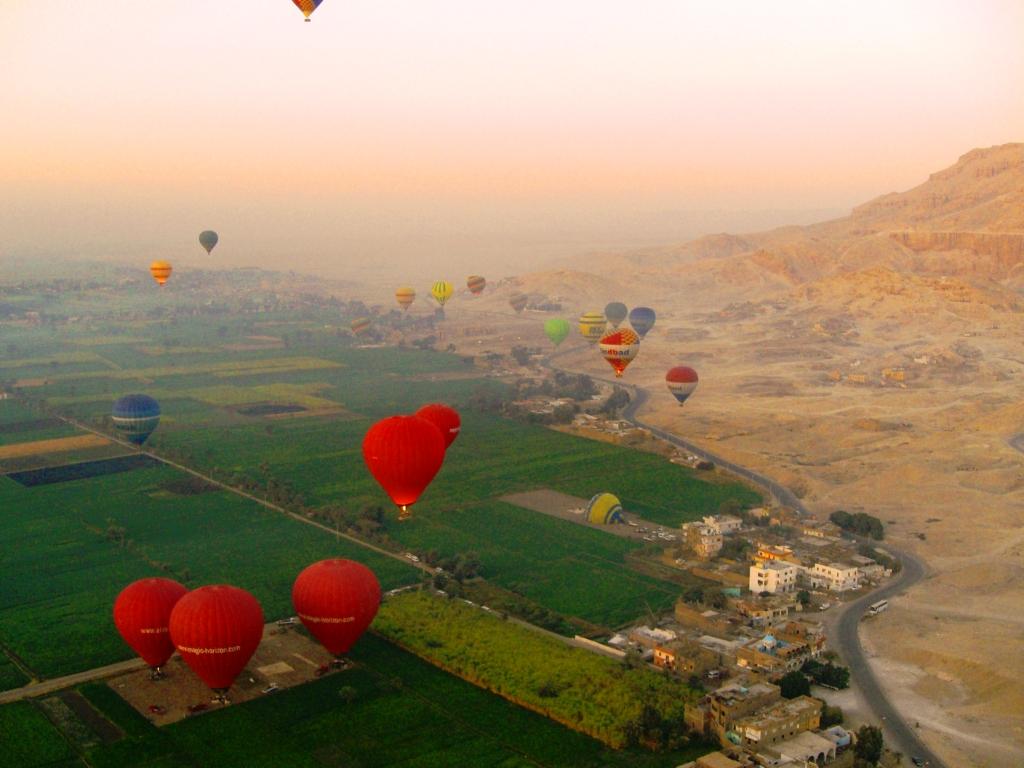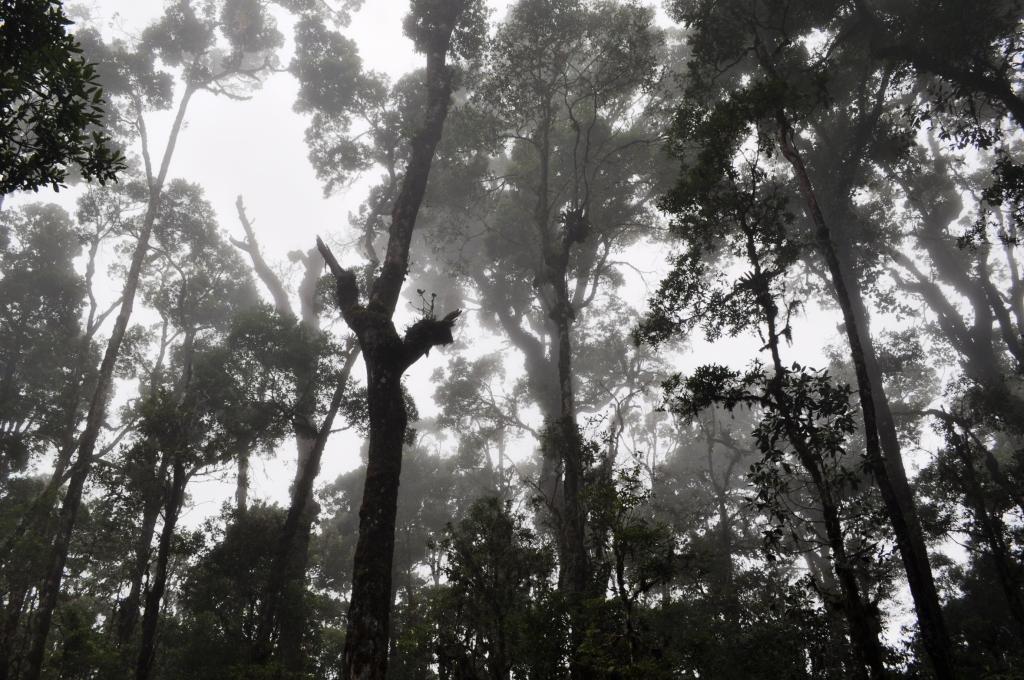It is dark — 97 percent dark chocolate dark, India ink dark, heart of Voldemort dark — in this swamp in the middle of a moonless night in the middle of Belize. Only in the distance, across the fresh-water lagoon, do a few lights reveal the Lamanai Outpost Lodge, an eco-resort located a short hike from the ruins of the ancient city of Lamanai. “Lamanai” is a Mayan word meaning “submerged crocodile,” which is exactly what we are looking for, here in the swamp, in the dark.
In Your Bucket Because…
- You’ll learn about field research, from how crocodiles are caught and tagged to what kind of information is collected and why.
- Lamanai offers three world-class activities — birdwatching, the crocodile expedition, and Mayan ruins — all in one place.
- Good for eco-tourists, adventure travelers, wildlife buffs, and anyone who wants to play the “can you top this trip?” game.
About fifteen hundred years ago, the ruined city across the lagoon was named for the reptiles that ply these waters, meaning that the crocodiles we are searching for could be descendants of Lamanai’s namesake reptiles. A beam of light slices through the night, seeking the tell-tale pin-pricks of glowing, reflective red eyes. There are thought to be more than 1000 crocodiles in the swamplands surrounding the lagoon on the New River. To find one can take a few minutes, or a few hours. Not to mention catching it.
The University of Florida Crocodile Research Project in Belize
Hunting for crocodiles in the middle of the night is a unique eco-adventure offered by the Lamanai Outpost Lodge. The tours began in conjunction part of a University of Florida project that studied the habitat, population size, growth, and health of the endangered Mexican, or Morelet’s crocodile, which lives in fresh or brackish waters in Mexico, Belize, and Guatemala. The University of Florida project began in 2006, with the aim of monitoring the health of individual animals and the stability of the population as a whole. Lamanai Outpost Lodge’s Crocodile Encounter turns tourists into science geeks: Guests assist the scientists in collecting data and learn about the ecological issues affecting a species that lived here millions of years before the ancient Mayans named their city after it.
Going on a Croc Hunt
Six of us are tucked onto an airboat, a noisy fan-powered contraption that sounds a bit like a helicopter, and seems to float just above the water so it can navigate shallow swamplands clogged with marshy vegetation. We’re wearing life jackets and noise-canceling headphones. Powerful search lights cut through the swamp, a bright counterpoint to the black night, but mostly what we see is marsh vegetation and the occasional sleepy bird.
But there are crocs in the swamp, and they betray themselves with that tiny flicker of red, the eyes of a predator. When the guides see it (and they always see it before we do), they shut off the boat’s noisy engine and silently pole the boat into place as near the crocodile as possible. Sometimes, close isn’t close enough: sometimes, crocodiles can be caught from the boat; but if the animal has disappeared into the swamp vegetation (and if it isn’t too big), the guide might hop out of the boat and into the swamp in pursuit.
Standing thigh deep in the murky water, and armed with a snare consisting of a long pole and a wire loop, our guide patiently searches the vegetation with his flashlight. There is a burst of splashing and thrashing, and the guide is back on the boat with his snare around the crocodile’s neck and fore-legs.
“We let him fight,” the guide explains. “Then he is tired when we put him on the boat and he won’t fight so much.” Caught in the snare, the crocodile twists and screams, sounding a bit like the baby raptor being hatched in the movie Jurassic Park.
Scientists for a Night
After a while, the crocodile stops thrashing. The guides hoist him (it does turn out to be a “him”) aboard the airboat. Crocodiles might be juveniles of only a foot or two in length, or can as big as 10 feet, sometimes more. Ours is a small juvenile, about 32 inches long. But small as he may be, our crocodile still has 66 – 68 sharply pointed teeth: We won’t be allowed to handle him until his jaws are safely held shut with a hefty rubber band. A rubber band might not seem like much protection against a snapping jaw and all those teeth. However, as strong as a crocodile’s jaws might be when they clamp down on their prey, the muscles that are used to open the jaw are not nearly as robust. So a thick band is enough to keep their mouths closed, and the hands of guests and guides safe.
Once the crocodile is on board and its jaws are safely shut, we get to work. The guide checks to see whether it has already been tagged. Ours has a tiny microchip in the fatty tissue of its flank, so the crocodile is identified. The information we collect tonight will be added to its file so that the scientists can assemble a record of the animal’s movements, growth, and health changes. If the crocodile hadn’t previously been tagged, the guide would have a inserted a microchip and started a new file.
Next up were the measurements of the crocodile’s tail circumference, its length, and its weight, all of which help scientists gauge if the animal is growing at a healthy rate. Naturalists also note its sex, along with skin tone and color (which can reveal the presence of parasites). Our job is to assist by taking notes regarding measurements, along with noting the GPS coordinates where the crocodile was found, filling in descriptions of the specific habitat, the air and water temperatures, and the weather conditions.
And then the grand finale: The guide offered us the opportunity to hold the crocodile. After a moment’s hesitation, I accepted the invitation, and found myself holding the dense and muscular, rough and rubbery body. The crocodile was surprisingly calm in my arms. A couple of other guests cautiously stepped up to take a turn, and after making the rounds, the crocodile was released back into the swamp, where it disappeared into the black water in the black night, leaving only a few ripples behind to remind us of the life that surges beneath the calm surface.
Practicalities
This activitiy is only available through the Lamanai Outpost Lodge, near Orange Walk, on the New River. The lodge is accessed by a boat ride, arranged through the lodge. Birdwatching is excellent along the New River, so if you’re interested, bring binoculars. Expect to see (and hear) howler monkeys at the lodge, which also offers wildlife and bird walks, as well as archaeology tours.
This article has been updated from a story originally published in December, 2011. The author traveled as a guest of Belize tourism.
